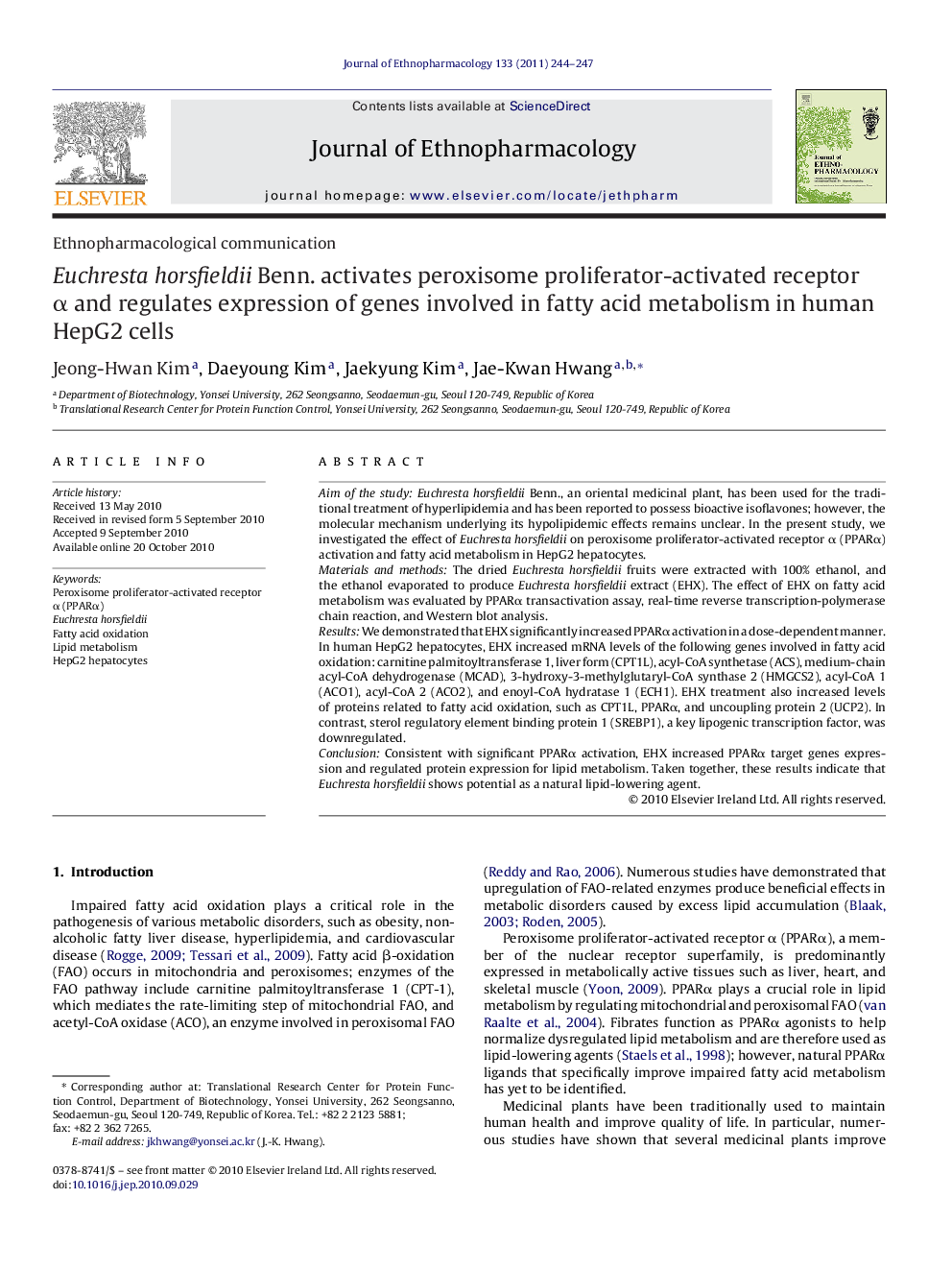| Article ID | Journal | Published Year | Pages | File Type |
|---|---|---|---|---|
| 2546058 | Journal of Ethnopharmacology | 2011 | 4 Pages |
Aim of the studyEuchresta horsfieldii Benn., an oriental medicinal plant, has been used for the traditional treatment of hyperlipidemia and has been reported to possess bioactive isoflavones; however, the molecular mechanism underlying its hypolipidemic effects remains unclear. In the present study, we investigated the effect of Euchresta horsfieldii on peroxisome proliferator-activated receptor α (PPARα) activation and fatty acid metabolism in HepG2 hepatocytes.Materials and methodsThe dried Euchresta horsfieldii fruits were extracted with 100% ethanol, and the ethanol evaporated to produce Euchresta horsfieldii extract (EHX). The effect of EHX on fatty acid metabolism was evaluated by PPARα transactivation assay, real-time reverse transcription-polymerase chain reaction, and Western blot analysis.ResultsWe demonstrated that EHX significantly increased PPARα activation in a dose-dependent manner. In human HepG2 hepatocytes, EHX increased mRNA levels of the following genes involved in fatty acid oxidation: carnitine palmitoyltransferase 1, liver form (CPT1L), acyl-CoA synthetase (ACS), medium-chain acyl-CoA dehydrogenase (MCAD), 3-hydroxy-3-methylglutaryl-CoA synthase 2 (HMGCS2), acyl-CoA 1 (ACO1), acyl-CoA 2 (ACO2), and enoyl-CoA hydratase 1 (ECH1). EHX treatment also increased levels of proteins related to fatty acid oxidation, such as CPT1L, PPARα, and uncoupling protein 2 (UCP2). In contrast, sterol regulatory element binding protein 1 (SREBP1), a key lipogenic transcription factor, was downregulated.ConclusionConsistent with significant PPARα activation, EHX increased PPARα target genes expression and regulated protein expression for lipid metabolism. Taken together, these results indicate that Euchresta horsfieldii shows potential as a natural lipid-lowering agent.
Graphical abstractFigure optionsDownload full-size imageDownload as PowerPoint slide
